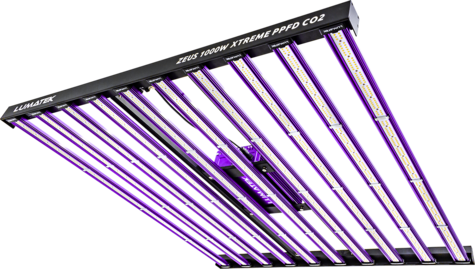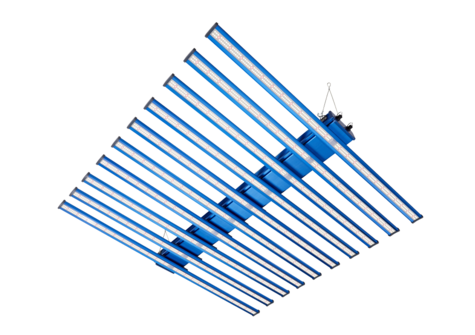Growers Lights: How the Introduction of LED Lighting Has Revolutionised Indoor Cultivation.
For millennia, farmers and botanists have desired the power to control sunlight as the catalyst of photosynthesis. Yet its unpredictable nature often hinders even experienced cultivators. Artificial lighting was first implemented in agriculture; with LED technology making its introduction even more revolutionary by lighting indoor cultivation with new light sources than ever before.
Artificial Lighting in Agriculture
The first inklings of artificial lighting in agriculture can be traced back to the early 20th century when incandescent lamps were tested as potential tools for plant growth.
Unfortunately, despite initial promise, these prototypes proved ineffective and expensive, eventually being consigned to history's pages as an interesting yet flawed experiment.
As time passed, innovation never stood still; High-Intensity Discharge (HID) lamps and fluorescent lighting quickly rose to prominence, offering enhanced efficiency and light output over their incandescent predecessors.
Unfortunately, these lights produced excess heat, consumed significant energy, and couldn't adapt their spectrums according to different stages of plant development - though still marking an important step on their journey toward perfecting artificial lighting for plant growth.
At the turn of the 21st century, Growers Lights and LED technology began its explosive rise. Beginning as diodes - devices used to allow the electric current to flow only one way - they gradually began emitting light when current passed through them, eventually giving birth to LEDs.
Their ability to emit specific wavelengths while remaining energy efficient with long lifespans made these LEDs truly revolutionary, an invaluable benefit in indoor cultivation applications.
Perhaps their most transformative aspect, however, was providing full spectrum illumination, mirroring sunlight's natural spectrum of illumination; something diodes simply couldn't do!


Attaining Full Light Spectrum in Plant Growth
To truly appreciate the full power of light spectrums for indoor cultivation, one must explore botany. Plants have evolved to use different wavelengths of light in different stages of their life cycle - blue is crucial in leafy development while red light enhances flowering and fruiting processes. LED lighting's superiority lies in precisely controlling light spectrums - something unattainable with conventional HID or fluorescent systems.
LEDs: Energy Efficiency and Longevity
What really sets LEDs apart is not their spectrum control alone; when we consider energy efficiency and longevity they come alive! Utilizing far lower wattages than traditional lighting solutions translates to lower energy usage as well as an environmentally friendlier footprint; with lifespans often surpassing 50,000 hours they also reduce replacement frequency saving both time and resources for growers.
LEDs and Heat Management
Another great benefit of LEDs is their efficient heat management. Where traditional HID or fluorescent lighting solutions such as HID or fluorescent can quickly turn an indoor garden into an oven, LEDs emit far less heat, helping prevent plant damage while cutting costs by eliminating costly cooling systems. Their versatility also makes them suitable for many growing environments, from miniature herb gardens to expansive commercial greenhouses.
With their impressive list of advantages, it's not hard to see why LED grow lights have experienced such rapid popularity among indoor cultivators. Offering unparalleled flexibility in terms of size and configurations, these lights allow growers to tailor their lighting setup exactly according to their specific needs - ultimately leading to improved plant growth, yield growth, energy savings and energy efficiency that bode well for the future of indoor cultivation.
As we look toward the future, one thing is apparent: LED lighting in agriculture has only just begun. Thanks to continual technological advances, we can expect further advancements in efficiency, lifespan and light quality as we explore smart lighting systems integrating sensors and automated controls - opening up possibilities unheard of before in indoor cultivation.
Conclusion: An Exciting Future for Indoor Cultivation
LED lighting has unquestionably revolutionized indoor cultivation from their humble diode beginnings to their evolution into versatile, efficient, long-lasting lighting solutions for growers. LEDs have revolutionized growing and lighting practices, forever altering how we approach indoor cultivation. And with technology always on the move ahead of them, LEDs will continue to shine even brighter for future generations of growers!